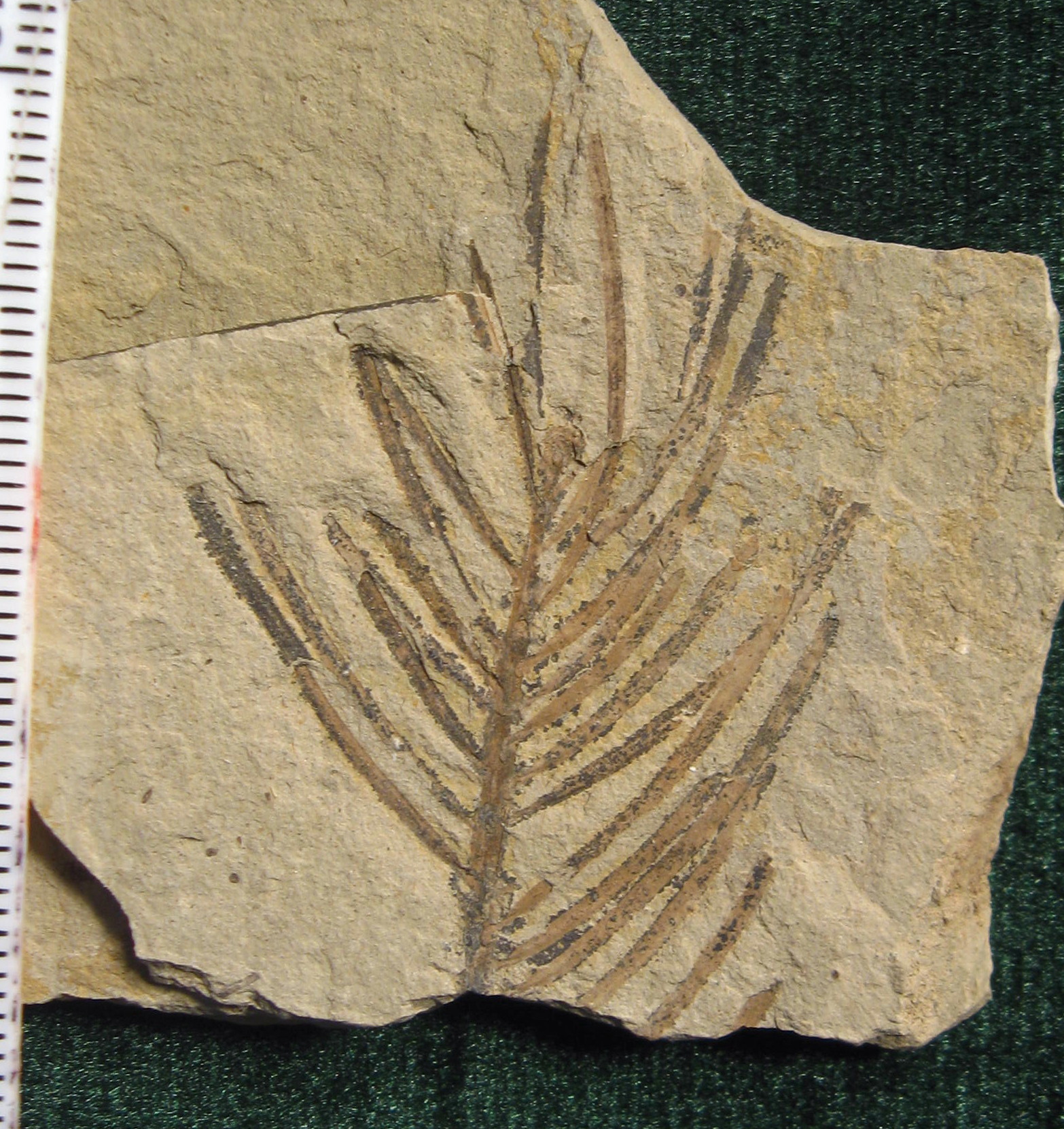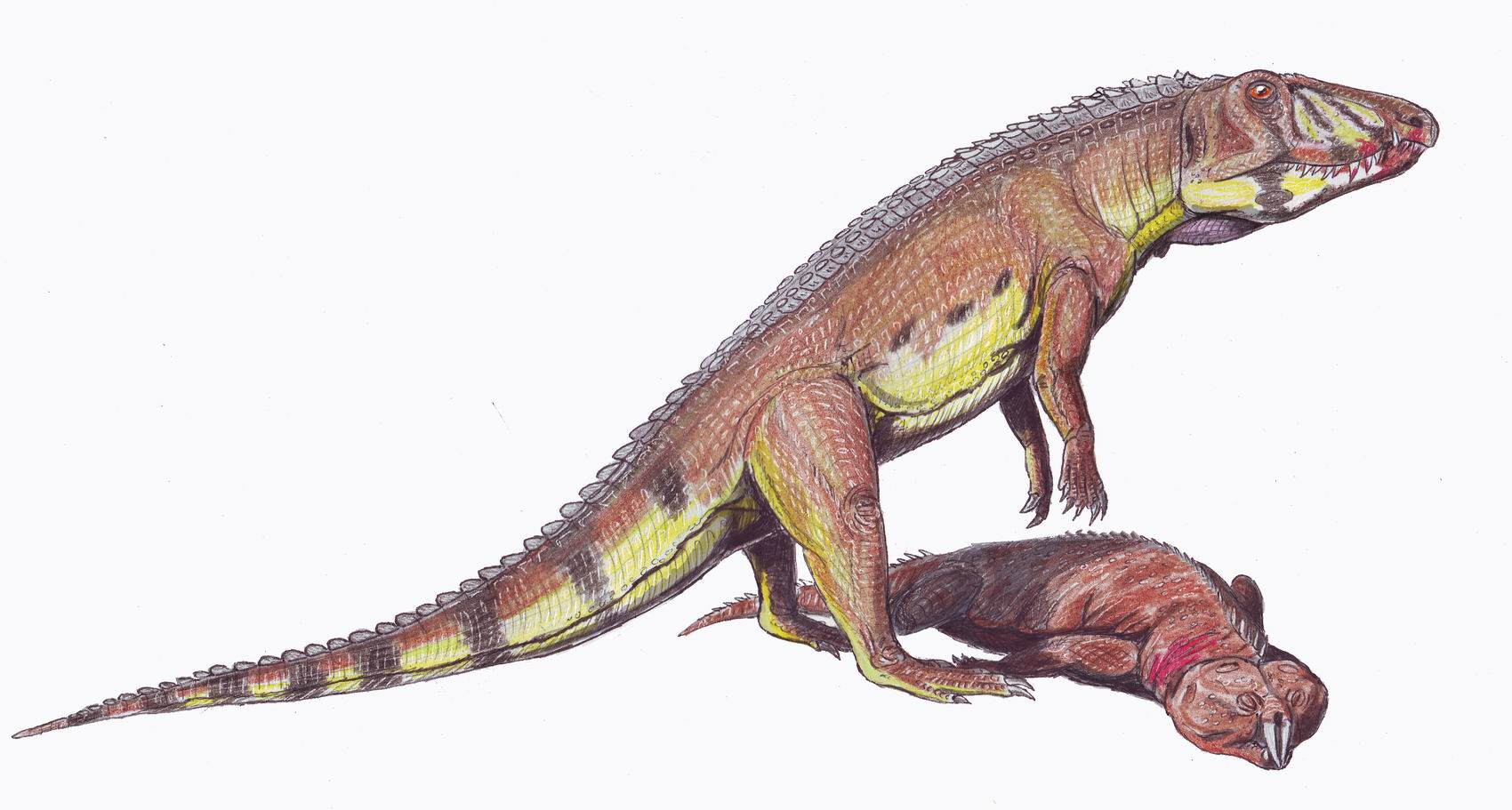|
Malutinisuchus
''Malutinisuchus'' is an extinct genus of Archosauromorph. The genus was named in 1986 with the description of the type species ''M. gratus''. ''Malutinisuchus'' is known from Ladinian-age Middle Triassic deposits in the Bukobay and Rassypnaya localities in Orenburg Oblast, Russia. In Russia, deposits of this age are referred to the Bukobay Gorizont The Bukobay Svita (also anglicized as Bukobay or Bukobai Formation) is a Middle Triassic geological unit in Russia.Prehistoric archosauromorphs Prehistoric reptile genera [...More Info...] [...Related Items...] OR: [Wikipedia] [Google] [Baidu] |
Middle Triassic
In the geologic timescale, the Middle Triassic is the second of three epochs of the Triassic period or the middle of three series in which the Triassic system is divided in chronostratigraphy. The Middle Triassic spans the time between Ma and Ma (million years ago). It is preceded by the Early Triassic Epoch and followed by the Late Triassic Epoch. The Middle Triassic is divided into the Anisian and Ladinian ages or stages. Formerly the middle series in the Triassic was also known as Muschelkalk. This name is now only used for a specific unit of rock strata with approximately Middle Triassic age, found in western Europe. Middle Triassic fauna Following the Permian–Triassic extinction event, the most devastating of all mass-extinctions, life recovered slowly. In the Middle Triassic, many groups of organisms reached higher diversity again, such as the marine reptiles (e.g. ichthyosaurs, sauropterygians, thallatosaurs), ray-finned fish and many invertebrate g ... [...More Info...] [...Related Items...] OR: [Wikipedia] [Google] [Baidu] |
1986 In Paleontology
Plants Pinophytes Angiosperms Newly described insects Molluscs Bivalves Fish Dinosaurs Newly named dinosaurs Data courtesy of George Olshevsky's dinosaur genera list. Newly named birds Plesiosaurs New taxa Pterosaurs * Fossil jaw fragments containing multicusped teeth were found in Dockum Group rocks in western Texas. One fragment, apparently from a lower jaw, contained two teeth, each with five cusps. Another fragment, from an upper jaw, also contained several multi-cusped teeth. These finds are very similar to the pterosaur genus ''Eudimorphodon'' and may be attributable to this genus, although without better fossil remains it is impossible to be sure.Wellnhofer, Peter (1991). "Summary of Triassic Pterosaurs." ''The Illustrated Encyclopedia of Pterosaurs.'' London, UK: Salamander Books Limited. p. 67. . New taxa Synapsids Mammals References {{portal, Paleontology Paleontology Paleontology (), also spelled palaeontology or palæontology, is ... [...More Info...] [...Related Items...] OR: [Wikipedia] [Google] [Baidu] |
Species
In biology, a species is the basic unit of Taxonomy (biology), classification and a taxonomic rank of an organism, as well as a unit of biodiversity. A species is often defined as the largest group of organisms in which any two individuals of the appropriate sexes or mating types can reproduction, produce Fertility, fertile offspring, typically by sexual reproduction. Other ways of defining species include their karyotype, DNA sequence, morphology (biology), morphology, behaviour or ecological niche. In addition, paleontologists use the concept of the chronospecies since fossil reproduction cannot be examined. The most recent rigorous estimate for the total number of species of eukaryotes is between 8 and 8.7 million. However, only about 14% of these had been described by 2011. All species (except viruses) are given a binomial nomenclature, two-part name, a "binomial". The first part of a binomial is the genus to which the species belongs. The second part is called the specifi ... [...More Info...] [...Related Items...] OR: [Wikipedia] [Google] [Baidu] |
Type Species
In zoological nomenclature, a type species (''species typica'') is the species name with which the name of a genus or subgenus is considered to be permanently taxonomically associated, i.e., the species that contains the biological type specimen(s). Article 67.1 A similar concept is used for suprageneric groups and called a type genus. In botanical nomenclature, these terms have no formal standing under the code of nomenclature, but are sometimes borrowed from zoological nomenclature. In botany, the type of a genus name is a specimen (or, rarely, an illustration) which is also the type of a species name. The species name that has that type can also be referred to as the type of the genus name. Names of genus and family ranks, the various subdivisions of those ranks, and some higher-rank names based on genus names, have such types. [...More Info...] [...Related Items...] OR: [Wikipedia] [Google] [Baidu] |
Genus
Genus ( plural genera ) is a taxonomic rank used in the biological classification of living and fossil organisms as well as viruses. In the hierarchy of biological classification, genus comes above species and below family. In binomial nomenclature, the genus name forms the first part of the binomial species name for each species within the genus. :E.g. '' Panthera leo'' (lion) and '' Panthera onca'' (jaguar) are two species within the genus ''Panthera''. ''Panthera'' is a genus within the family Felidae. The composition of a genus is determined by taxonomists. The standards for genus classification are not strictly codified, so different authorities often produce different classifications for genera. There are some general practices used, however, including the idea that a newly defined genus should fulfill these three criteria to be descriptively useful: # monophyly – all descendants of an ancestral taxon are grouped together (i.e. phylogenetic analysis should c ... [...More Info...] [...Related Items...] OR: [Wikipedia] [Google] [Baidu] |
Archosauromorph
Archosauromorpha ( Greek for "ruling lizard forms") is a clade of diapsid reptiles containing all reptiles more closely related to archosaurs (such as crocodilians and dinosaurs, including birds) rather than lepidosaurs (such as tuataras, lizards, and snakes). Archosauromorphs first appeared during the late Middle Permian or Late Permian, though they became much more common and diverse during the Triassic period. Although Archosauromorpha was first named in 1946, its membership did not become well-established until the 1980s. Currently Archosauromorpha encompasses four main groups of reptiles: the stocky, herbivorous allokotosaurs and rhynchosaurs, the hugely diverse Archosauriformes, and a polyphyletic grouping of various long-necked reptiles including '' Protorosaurus'', tanystropheids, and '' Prolacerta''. Other groups including pantestudines ( turtles and their extinct relatives) and the semiaquatic choristoderes have also been placed in Archosauromorpha by some a ... [...More Info...] [...Related Items...] OR: [Wikipedia] [Google] [Baidu] |
Ladinian
The Ladinian is a stage and age in the Middle Triassic series or epoch. It spans the time between Ma and ~237 Ma (million years ago). The Ladinian was preceded by the Anisian and succeeded by the Carnian (part of the Upper or Late Triassic). The Ladinian is coeval with the Falangian regional stage used in China. Stratigraphic definitions The Ladinian was established by Austrian geologist Alexander Bittner in 1892. Its name comes from the Ladin people that live in the Italian Alps (in the Dolomites, then part of Austria-Hungary). The base of the Ladinian Stage is defined as the place in the stratigraphic record where the ammonite species '' Eoprotrachyceras curionii'' first appears or the first appearance of the conodont '' Budurovignathus praehungaricus''. The global reference profile for the base (the GSSP) is at an outcrop in the river bed of the Caffaro river at Bagolino, in the province of Brescia, northern Italy.The GSSP was established by Brack ''et al.'' (200 ... [...More Info...] [...Related Items...] OR: [Wikipedia] [Google] [Baidu] |
Orenburg Oblast
Orenburg Oblast (russian: Оренбургская область, ''Orenburgskaya oblast'') is a federal subject of Russia (an oblast). Its administrative center is the city of Orenburg. From 1938 to 1957, it bore the name ''Chkalov Oblast'' () in honor of Valery Chkalov. Population: 2,033,072 ( 2010 Census). Geography Orenburg Oblast's internal borders are with the republics of Bashkortostan and Tatarstan to the north, Chelyabinsk Oblast to the north-east, and with Samara and Saratov oblasts to the west. Orenburg Oblast also shares an international border with Kazakhstan to the east and south. The oblast is situated on the boundary between Europe and Asia. The majority of its territory lies west of the continental divide in European Russia and smaller sections in the east situated on the Asian side of the divide. The most important river of the oblast is the Ural and the largest lake Shalkar-Yega-Kara. Orenburg is traversed by the northeasterly line of equal latitude and ... [...More Info...] [...Related Items...] OR: [Wikipedia] [Google] [Baidu] |
Russia
Russia (, , ), or the Russian Federation, is a transcontinental country spanning Eastern Europe and Northern Asia. It is the largest country in the world, with its internationally recognised territory covering , and encompassing one-eighth of Earth's inhabitable landmass. Russia extends across eleven time zones and shares land boundaries with fourteen countries, more than any other country but China. It is the world's ninth-most populous country and Europe's most populous country, with a population of 146 million people. The country's capital and largest city is Moscow, the largest city entirely within Europe. Saint Petersburg is Russia's cultural centre and second-largest city. Other major urban areas include Novosibirsk, Yekaterinburg, Nizhny Novgorod, and Kazan. The East Slavs emerged as a recognisable group in Europe between the 3rd and 8th centuries CE. Kievan Rus' arose as a state in the 9th century, and in 988, it adopted Orthodox Christianity from the ... [...More Info...] [...Related Items...] OR: [Wikipedia] [Google] [Baidu] |
Prehistoric Archosauromorphs
Prehistory, also known as pre-literary history, is the period of human history between the use of the first stone tools by hominins 3.3 million years ago and the beginning of recorded history with the invention of writing systems. The use of symbols, marks, and images appears very early among humans, but the earliest known writing systems appeared 5000 years ago. It took thousands of years for writing systems to be widely adopted, with writing spreading to almost all cultures by the 19th century. The end of prehistory therefore came at very different times in different places, and the term is less often used in discussing societies where prehistory ended relatively recently. In the early Bronze Age, Sumer in Mesopotamia, the Indus Valley Civilisation, and ancient Egypt were the first civilizations to develop their own scripts and to keep historical records, with their neighbors following. Most other civilizations reached the end of prehistory during the following Iron Age. ... [...More Info...] [...Related Items...] OR: [Wikipedia] [Google] [Baidu] |


_(2).jpg)



